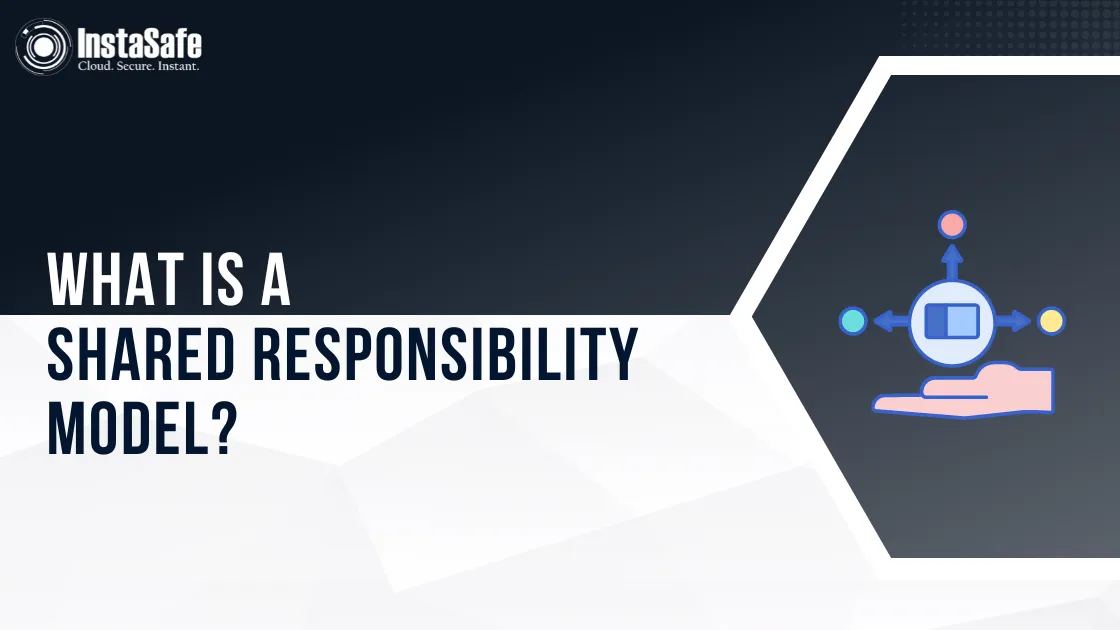What is a Shared Responsibility Model?

The shared responsibility model is a security framework that defines the liabilities of cloud service providers and cloud users in securing cloud resources. The model is designed to ensure that both parties work together to alleviate security hazards and help prevent data breaches. In this blog, we will explore what the shared responsibility model is, why it's important, and how it works.
What's the Shared Responsibility Model?
The shared responsibility model is a security framework that outlines the liabilities of cloud service providers and users in securing cloud resources. In this model, the cloud service provider is responsible for securing the beginning cloud structure, similar to the physical networks, and storehouses. The client is responsible for securing the operations, data, and user access to the cloud resources. The shared responsibility model is a critical element of cloud security. It helps ensure that cloud users understand their liabilities and take applicable measures to protect their data and operations. It also helps cloud service providers manage security risks by defining their liabilities and setting clear prospects for their users.
Why is the Shared Responsibility Model Important?
The shared responsibility model is essential for cloud security because it helps prevent data breaches and security incidents. Without a shared responsibility model, cloud users may assume that the cloud service provider is responsible for securing all aspects of their cloud terrain, including their operations and data. This can lead to a false sense of security and leave cloud resources vulnerable to attacks. The shared responsibility model also helps ensure compliance with regulations and norms related to data protection and sequestration. For illustration, the Health Insurance Portability and Responsibility Act( HIPAA) requires that covered realities and business associates apply applicable security measures to protect electronically protected health information( ePHI). The shared responsibility model helps ensure that both cloud service providers and users are taking the necessary measures to align with HIPAA and other regulations.
How Does the Shared Responsibility Model Work?
The shared responsibility model works by defining the liabilities of cloud service providers and users in securing cloud resources. The model generally encompasses three major segments - the infrastructure, the platform, and the application.
Structure: The structure subcaste includes the physical storehouse and network factors that are handled by the cloud service provider. In this subcaste, the cloud service provider is responsible for securing the structure and confirming that it's available to users.
Platform: The platform subcaste includes the operating system, middleware, and runtime factors that are handled by the cloud service provider. In this subcaste, the cloud service provider is responsible for securing the platform and ensuring that it's available to users.
Operation: The operation subcaste includes the operations, data, and user access controls that are handed by the client. In this subcaste, the client is responsible for securing the operation and data and managing user access controls.
To illustrate how the shared responsibility model works, let's take the illustration of Amazon Web Services( AWS), one of the leading cloud service providers. In AWS, the shared responsibility model has been divided into two corridors-the security of the cloud and the security in the cloud.
Security of the Cloud: AWS is responsible for securing and maintaining the structure, similar to the physical storehouse, and network factors. AWS implements a range of security measures to ensure the security of the structure, including data encryption, network segmentation, and trouble discovery.
Security in the Cloud: AWS users are responsible for securing their operations, data, and user access controls. This includes enforcing access controls, encryption, and covering for security incidents. AWS provides a range of security services and tools to help users apply these security measures, similar to AWS Identity and Access Management( IAM), AWS Key Management Service( KMS), and AWS CloudTrail.
Conclusion:
In conclusion, the shared responsibility model is a critical element of cloud security. It defines the liabilities of cloud service providers and users in securing cloud resources and helps with data.
Key Products
Zero Trust Application Access | Zero Trust Network Access | Multi Factor Authentication | IAM Identity And Access Management | Secure Enterprise Browser
Key Features
SSO Single Sign On | Endpoint Security | Contextual Based Access Controls | Always On VPN Connection |Clientless VPN | Device Binding | Device Posture Check | Domain Joining
Key Solutions
VPN Alternative Technology | Secure Remote Access Solutions | Cloud Application Security | DevOps Security | VoIP Security Solutions
